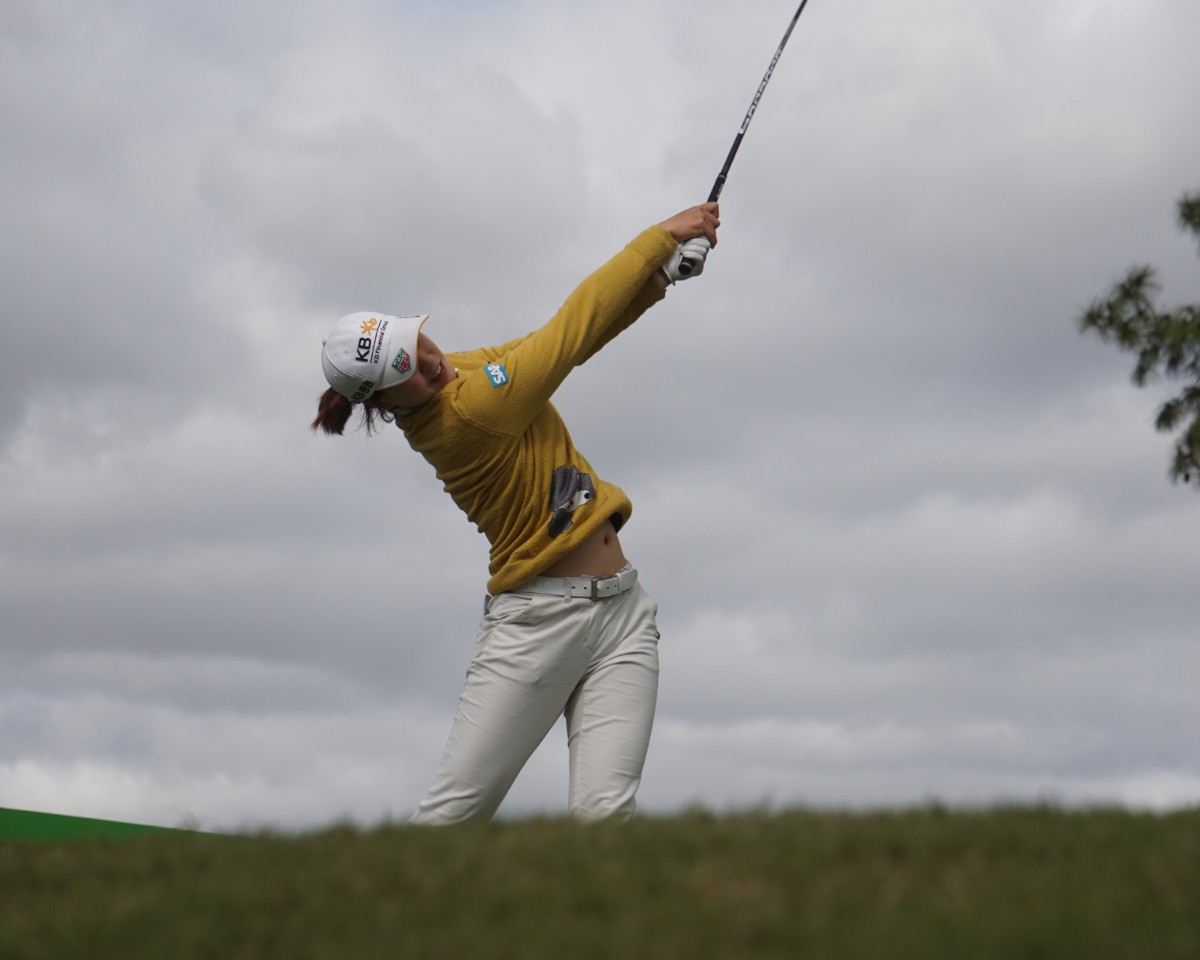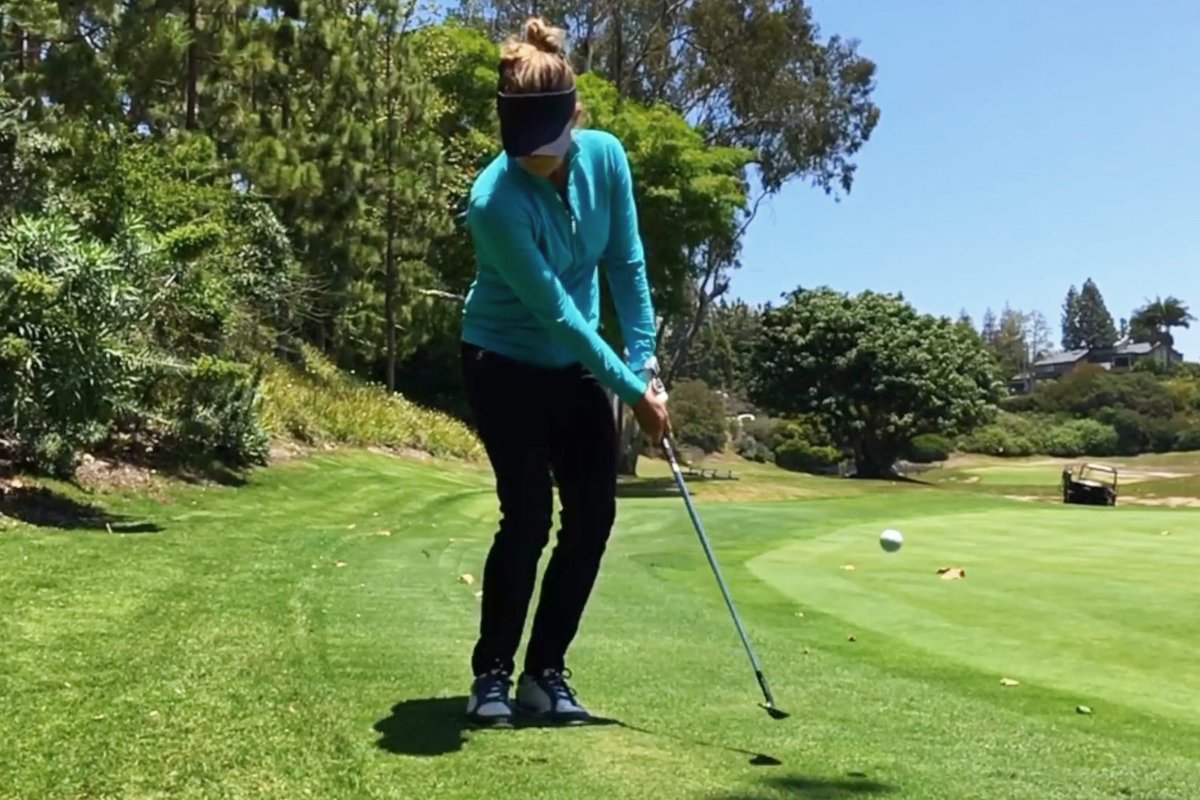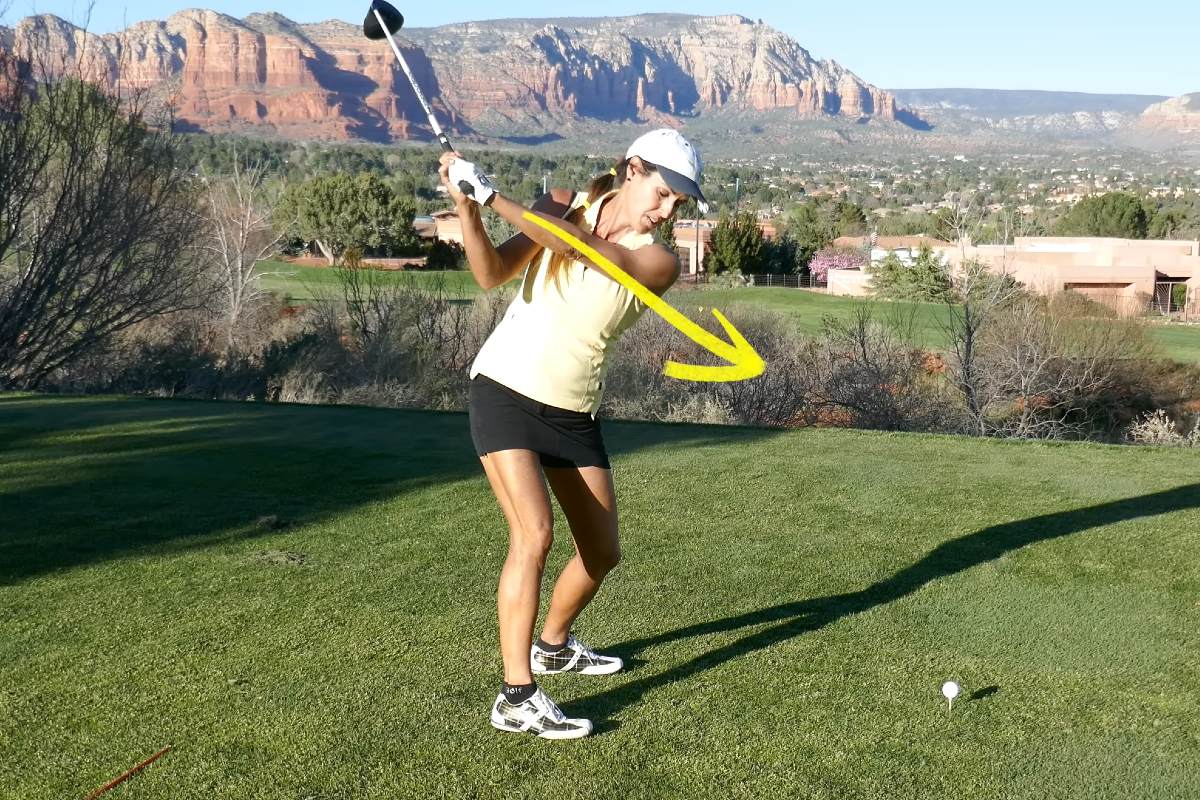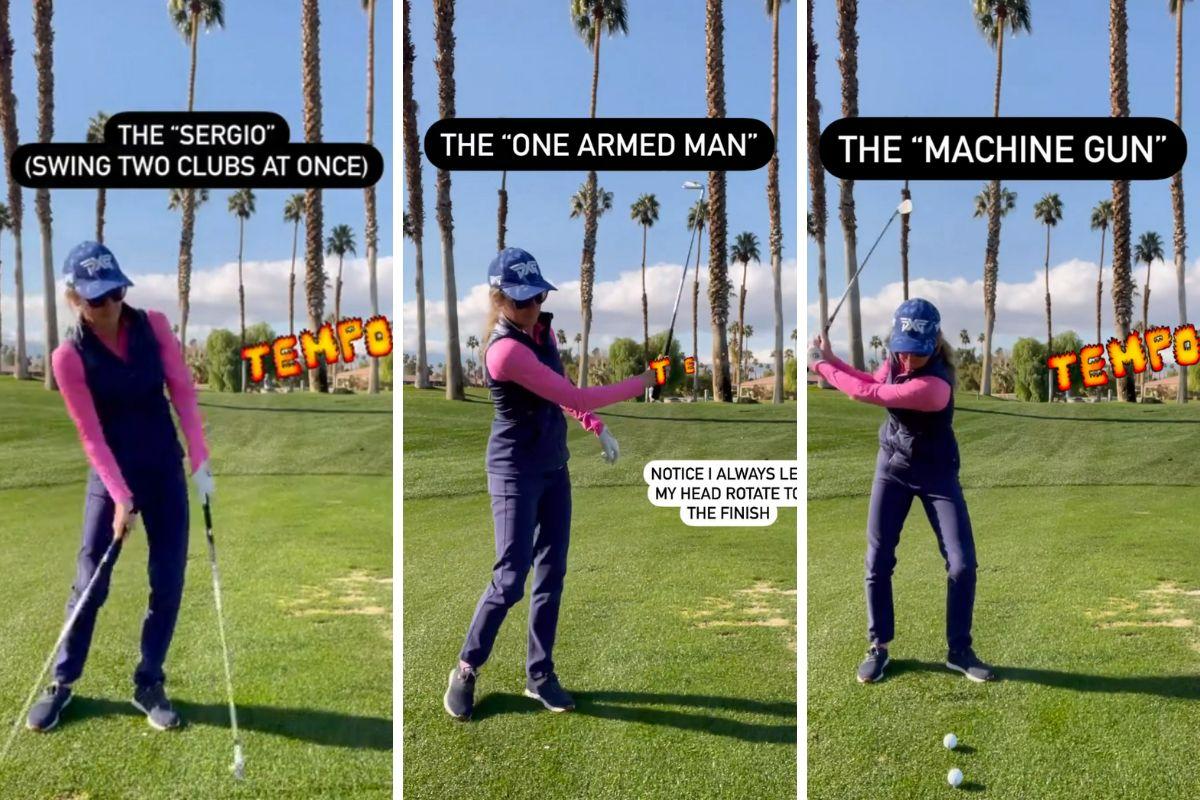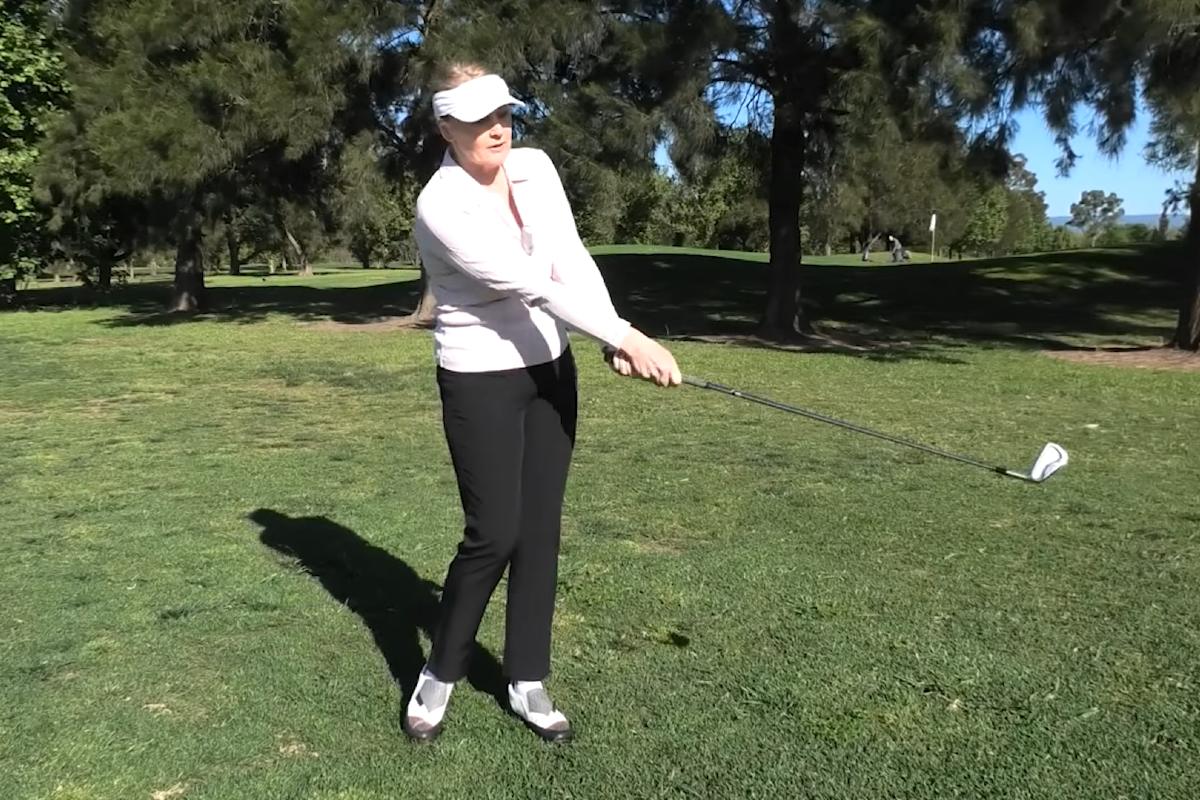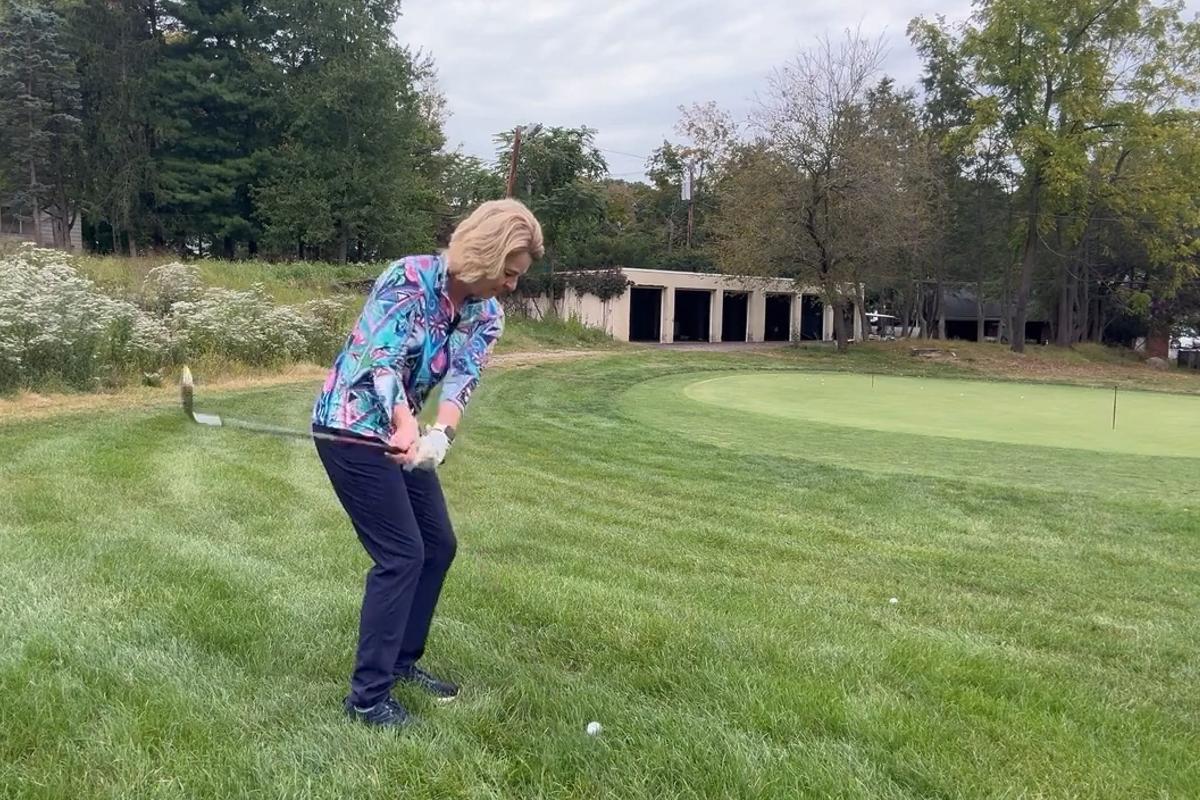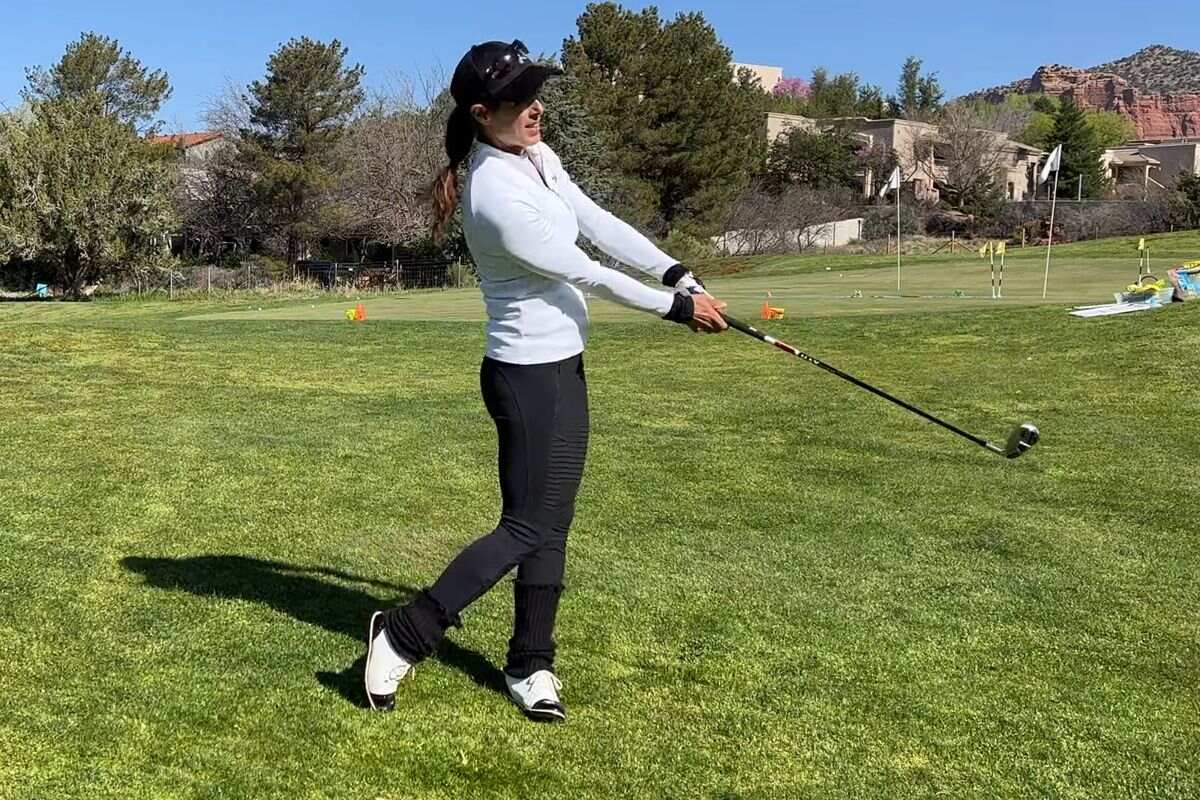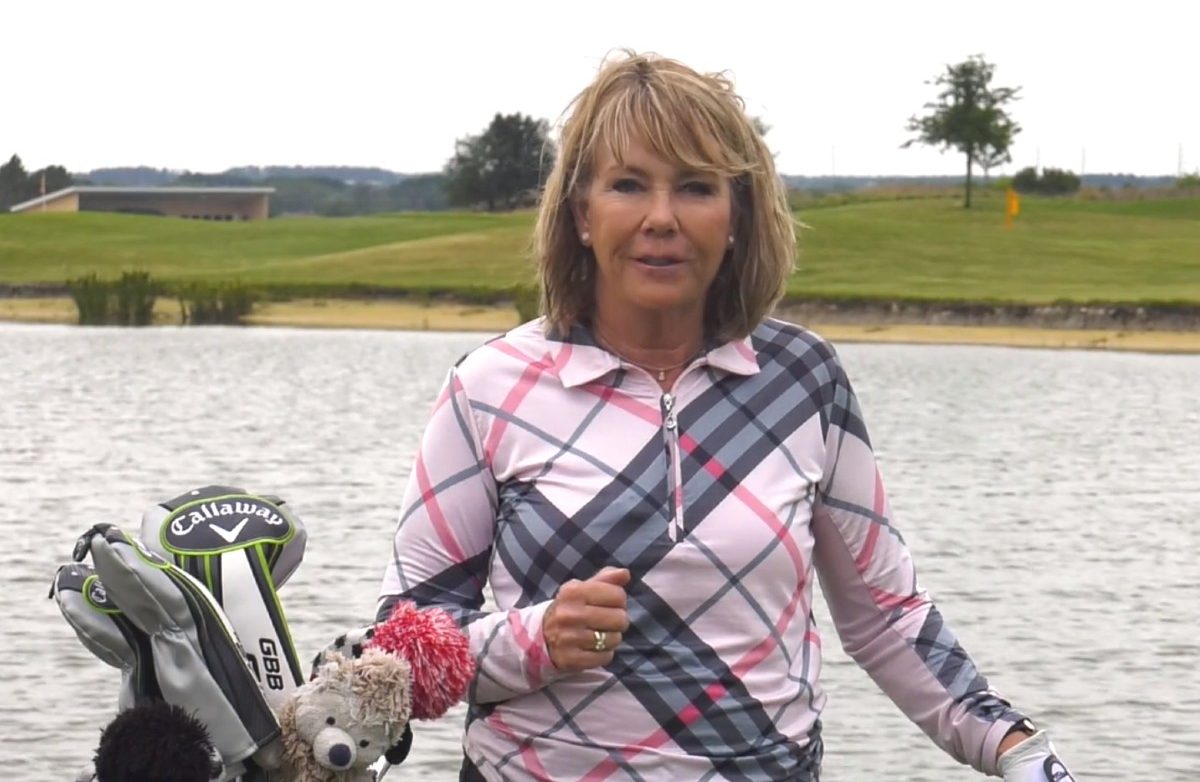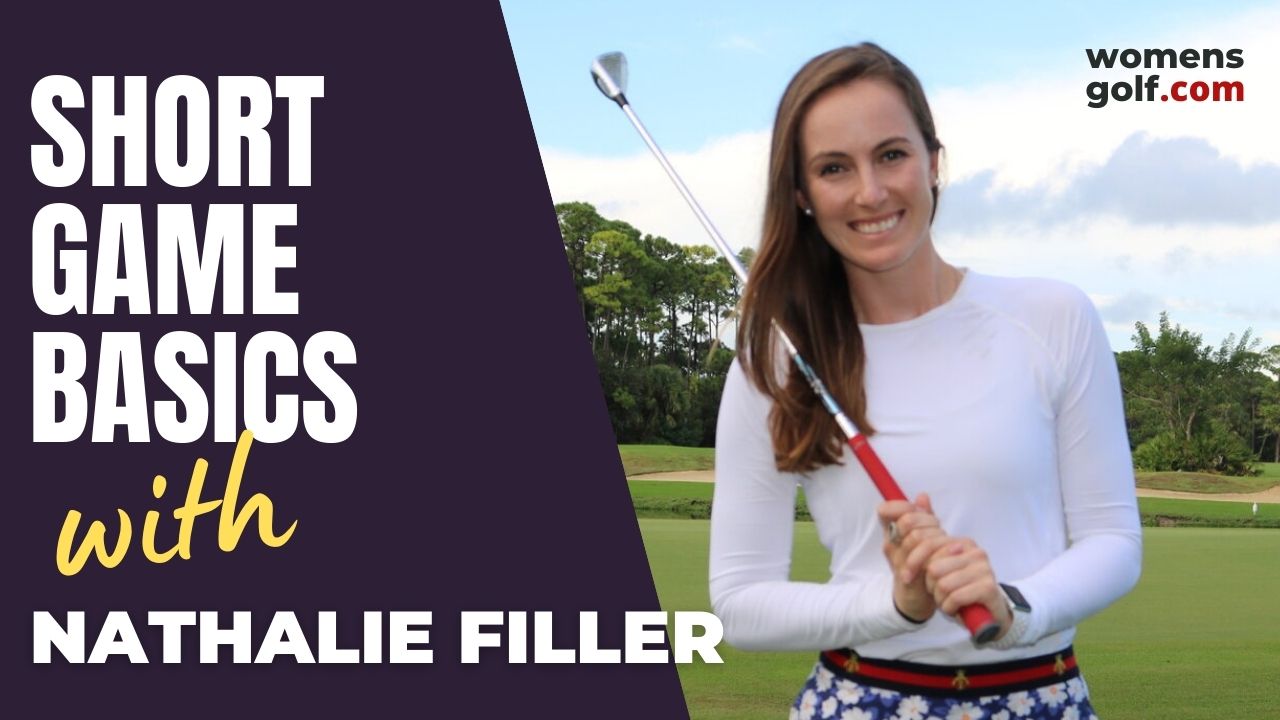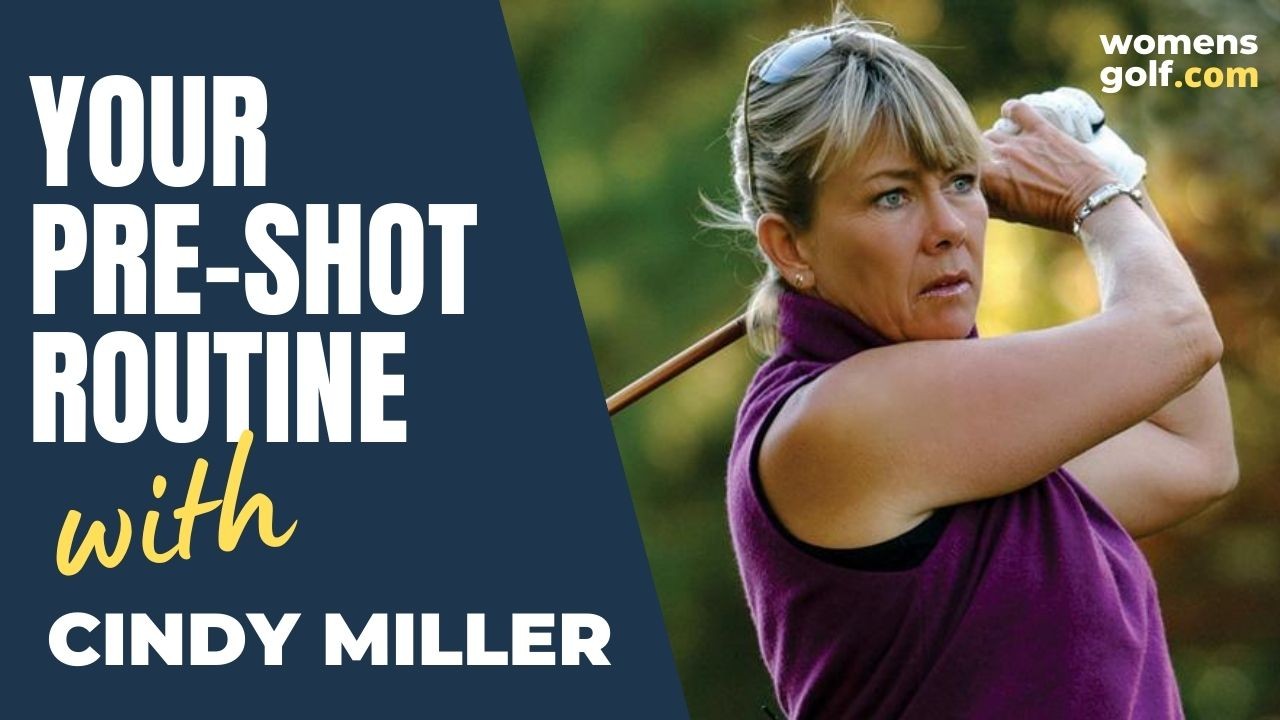Every teacher develops their own unique style, philosophy, and belief system when they choose Golf Education as a career.The LPGA does a super job certifying teachers with a research-based/student-centered integrated performance model for LEARNING and PERFORMANCE that allows each teacher to develop their own “way” of teaching, providing it is all about the student and their goals.This model has served me well.
A 30+ year career in teaching and coaching has helped me explore and develop my philosophy. Relating to all the other sports I played as a kid and through college became important as I realized how critical balance, footwork, and kinematic sequence is and that all throwing/striking sports have more similarities than one would believe. This understanding has helped me organize my work with my students on what I call the “3P’s”…Posture, Pivot, and Path. This is likely not different from many teachers who emphasize how critical the set up is for an effective, efficient, and compatible golf swing motion…and I wholeheartedly agree. Much of the success in a good golf swing comes before you move the club away from the ball. The chronology of the “3P’s” has helped me help my student by simplifying and increasing both their awareness and focus of attention as they learn the “checklist”. Hope it helps you too!
POSTURE
Ben Hogan once wrote, “incorrect stance and faulty posture greatly affect the success of the entire swing.” He couldn’t have been more right. Your structural hygiene is important!
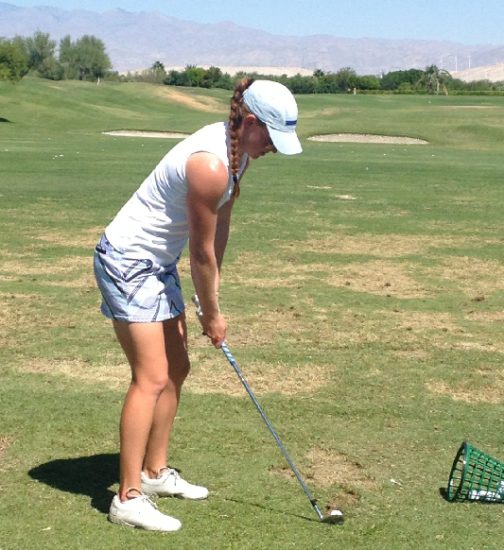
In its simplest terms, posture is the position from which movement in the golf swing begins and ends. And if affects these critical elements of the swing: balance (which influences control of the golf club and therefore distance and direction), swing plane (which influences the distance/direction of the ball and shape of the shot), and athleticism (which influences your power and ball striking.)
Poor golf shots often are caused by poor setup. A golf swing cannot be consistent if the body is not in balance at address. Once the balance is compromised, there is increased tension in the body and the club must be manipulated to control it. There is a lack of rhythm and inconsistent ball striking is often the result.
The purpose of correct preparation is to set off a chain reaction of good positions and rhythmical motion through the swing. To get this synchronized movement of the body, arms, hands, and club, we need to get the “counter-balanced ready feeling” … the placement of the body that encourages good balance and allows the pivot and swing path to “happen”.
When I teach, good posture is not negotiable. Often we go no further until this important area is understood and accomplished. Not only is poor posture mechanically incorrect and tension producing, it can cause many aggravations and injuries, often to the lower back. Flexibility in the hamstrings and lower back can help, along with this simple procedure to find the counterbalance posture for a good set up:
- Stand tall with your feet the width of your hips. Hold a golf club directly behind your back, touching your head, spine, and tail bone. Hopefully, you feel as if everything is “stacked” in a straight line and your weight is evenly distributed over your entire foot (both feet).
- Next, unlock your knees. Don’t go into a crouch. Keep all three contact points that you established in #1 with the golf club. This unlocking of your knees will help take the pressure off of your lower back when we tilt forward.
- The third step is to bend forward from the hips (there is no “waist” in anatomy) at about 34 to 45 degrees depending on your height and flexibility. Your seat and thighs will go back and your head stays up while you are tilting/moving forward to “counterbalance” yourself. Again, the club should still be touching the three contact points.
- Finally, pull the club away from your back and bring it to the front by allowing your arms to hang straight down from your shoulders, establishing the distance your body will be from the handle end of the golf club. At this point, be sure to keep the spine angle you worked so hard to establish.
From this balanced address position, you are steady and stable over the arches of your feet. You are “unlocked” to pivot. The arms have plenty of clearance to turn away from the ball with the club on plane and the body coiling fluidly over the right leg on the backswing and uncoiling back to the left leg on the downswing. You are tension free and the feedback you get based on ball flight and your balanced finish position will tell you how great your setup was.
PIVOT
The modern swing seems to be all about rotation—torque, twist, turn, X-factor, etc… these are swing buzzwords that are commonly given as the answer to a powerful swing and thus, increased distance. I believe these things can create substantial power, but done alone, could be creating the possibility for injury.
It seems to me that the more that I understand about anatomy, the more I believe that the body is not designed for the this type of rotational activity by itself in the golf swing. However, if some lateral movement is allowed, this alone could put less stress on the back and joints, freeing up the chest and shoulders to turn. By shifting and turning (movement/compound pivot), we can create both power and accuracy. Movement, to me, is natural, athletic, and rhythmical…all words we strive for in throwing and striking sports!
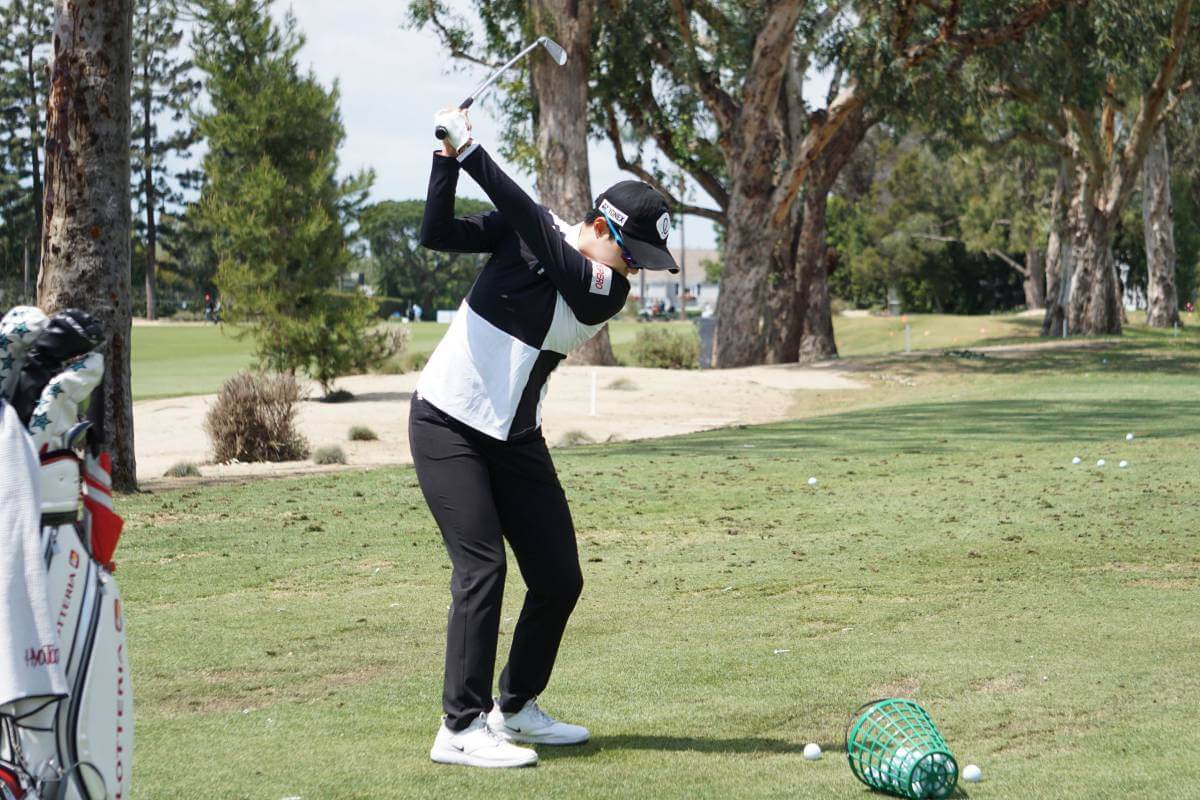
I can appreciate the concern about lateral movement in the swing. We have been warned of the dangers of “swaying” during the swing . However, if your swing is a result of a good kinetic chain (the muscle groups in the body working in a series or order of movement and you utilize a compound pivot, I think you will believe in movement. Additionally, if your swing center (the swing center is a point located in the upper spine around which the upper body rotates and the swing of the arms takes place) stays constant with the least possible movement, you will maintain clubhead speed and centeredness of contact will improve. In order to keep our swing circle center still, we must learn to maintain the exact balanced forward tilt of our spine (until well after the hit is complete) while we allow the lower spine to tilt left and right in the lateral direction. This lateral motion is vital since it shifts the weight from one foot to the other, getting the body weight behind the golf ball on the backswing and allowing us to use our legs and trunk muscles more efficiently. An important visual/kinesthetic understanding is that for our center of gravity to move laterally, we are feeling and visualizing a forward/back movement as in marching. For a right-handed player this will mean a right heel/left toe image on the backswing and a left heel/right toe image on the forward swing motion leading into the finish.
A good pivot is a compound action… a shift-turn-shift-turn sequence. Many times, it can seem like an expert player is only turning because this pivot sequence is happening in such a small amount of space and they look as if they are on top of the ball. Upon closer examination, you will see that the most efficient swings incorporate a two-legged balanced start, shifting to a one-legged balanced top swing position to a one-legged balanced finish position. Basically, you are creating a right side “pole” or axis that will free the left side to turn outward behind the golf ball. (imagine a swinging gate) This not only gives more time for the club to get to the top of the backswing, but also permits a good torso and shoulder turn.
As it is in the backswing, the forward swing is simply a change of axis and weight shift from the right foot to the left foot with a turn through to a balanced finish position. This includes an assertive “drive” or “kick” with your right leg to shift the weight to your left and to get a “running start” at the golf ball, creating optimal clubhead speed. In almost all sports that involve throwing or striking, the athlete makes a “running start” of sorts. Not only does this legwork provide additional club speed in the golf swing, but it also gives you the second benefit of maintaining your balance as your arms swing forward.
There are several ways to “get” this weight transfer ideal. Some like to think of shifting their center of gravity (belly button area) to the right and left and others imagine a lower spine shifting from right to left in a “wrecking ball” or “church bell” type of image. With both of these images, the top of the spine (swing center) remains in a relatively fixed position, acting as a fulcrum for the spine in a pendulum type motion. The head may move some but will not move in such a way that the movement becomes metronome-like.
In fact, the quieter you can keep your swing center, the better the contact. The hips do not only turn…if you do this, your head will likely sway. If you tilt the hips up and down on a diagonal and then turn, you will have completed this compound pivot and be in an ideal position to throw the club at the ball, around a circle with your hands…a most athletic motion, in my opinion. Throwing sounds and feels better than pulling or pushing…supple quickness, not rigid slowness. To throw, you must move…step and throw.
Students who learn to swing a golf club by learning to pivot first are on their way to an efficient and consistent golf swing. For so many, it is such a relief and their swings (in terms of power and accuracy) improve and their overall enjoyment intensifies. These things, coupled with less strain and pain in the body, have convinced them that this is the way to go. Movement is allowed in the golf swing … learn to pivot and hit the ball like an athlete!
PATH
Your clubhead should not approach the ball along the target line, but instead on a curve. Only at the instant it strikes the ball, is it moving along that line. After impact, it curves back around up and to the left.

20-25% of the influence on your shot direction will come from the path. It doesn’t have to be perfect – it just has to be within a reasonable range.
Any path more crooked than 4 degrees will cause your dead straight shots to miss the fairway! You will either push or pull.
if you are excessively inside-to-out with your path, you will tend to hit pushes and hooks. Outside to in paths often leads to pulls and slices.
What I love about creating a good pivot is that it can create a repeating inside to target line to inside club path. Thus, a good path is simply baked into the pivot automatically.
SUMMARY OF THE 3 P’S – POSTURE, PIVOT, AND PATH
Work on good posture not only for a better, balanced golf swing but for everyday health and injury free golf.
Learn a proper pivot, a compound action entailing a diagonal/lateral movement of the hips in either direction, a transfer of weight determined by your center of gravity, a chest/shoulder turn on the back and through swing, and rotation around the inclined spine. This pivot creates power and also can help prevent injury in the golf swing when done properly…only rotating is hard on the body. You have permission to move!
Encourage and a swing path that can be repeated. My belief is that good posture leads to a good pivot. A good pivot leads to a repeatable swing plane. If it can be repeated, you are well on your way to improved ball striking!
Deb
Feature Photo: LPGA player, In Gee Chun lets fly at the 2019 Diamond Resorts Tournament of Champions | Photo: Ben Harpring

